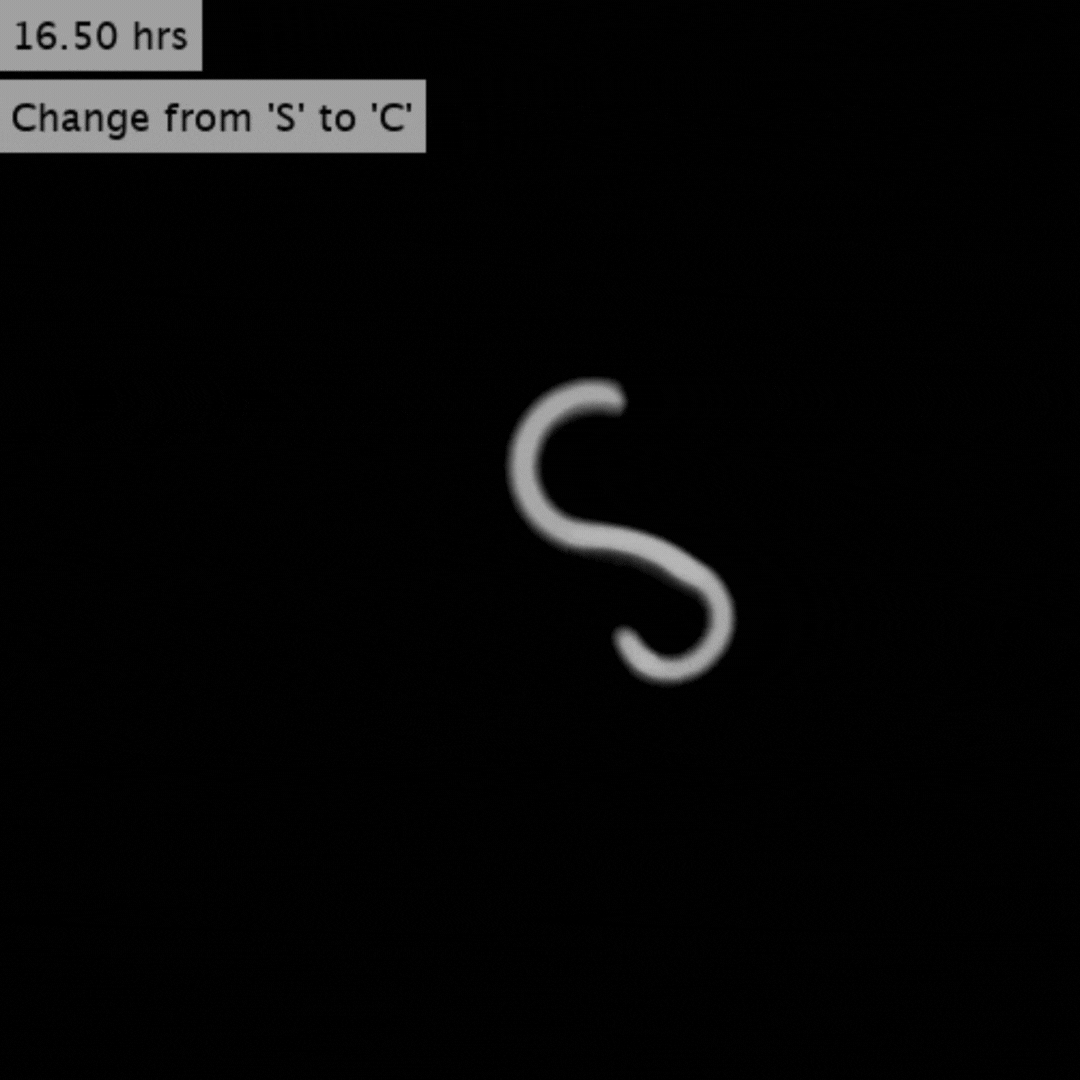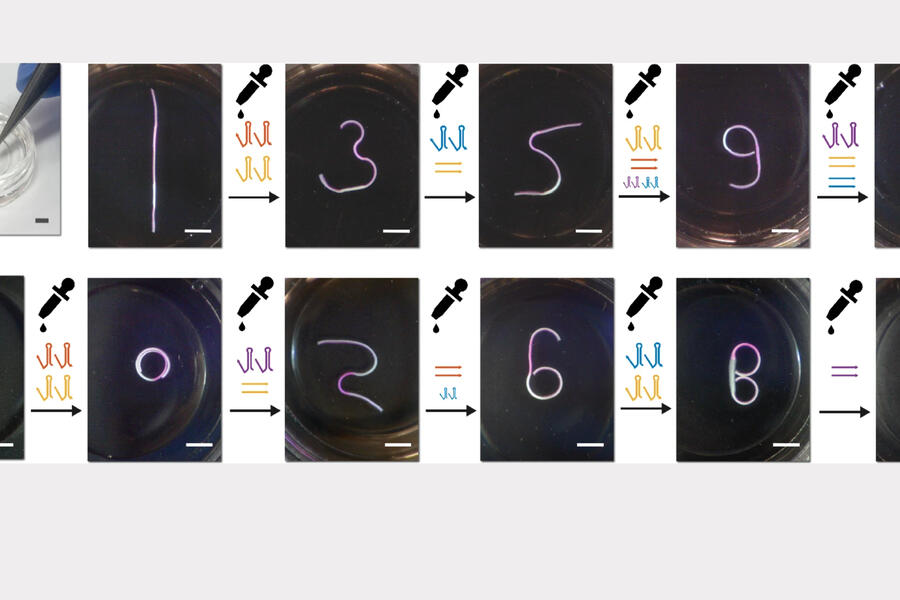Johns Hopkins engineers have developed gel strips that change shape when given chemical instructions written in DNA code. These "gel automata," measuring just centimeters, can grow or shrink, transforming from one letter or number to another when triggered by specific DNA molecules. This breakthrough opens possibilities for shape-shifting robots and medical devices that can reconfigure themselves to perform various tasks.
Their research appears in Nature Communications.
"These gel automata, which respond to DNA instructions precisely and dynamically, represent an important step toward a new generation of adaptive and responsive materials for applications from medicine to robotics," said Ruohong Shi, Engr '23 (PhD), who worked with Rebecca Schulman and David Gracias, both professors in the Whiting School of Engineering's Department of Chemical and Biomolecular Engineering, on the study. Shi is a postdoctoral fellow at the National Institute of Standards and Technology.
Shape changes happen all the time in nature, from the development of embryos to the growth and aging of organisms. In creating the gels, the researchers were inspired by living systems that use nucleic acids to induce physical changes, by traditional machines that can repeatedly reconfigure based on instruction, and by soft robots that change shape in response to light or electrical signals.
"Our study shows how we can program similar shape-shifting in very soft materials using chemicals," said Gracias.
In their study, the researchers first developed gels that could grow or shrink in response to the signals from four independent DNA sequences with no other human intervention. They observed the gels' transformation, quantifying their responses to various chemical signals using time-lapse imaging.

Image caption: Hopkins engineers created small, flexible gels that can be programmed to change shape when exposed to DNA-based activators.
Image credit: Johns Hopkins University
They discovered that the speed at which the gels change shape is influenced by how quickly water moves in and out of them. The researchers note that this is similar to natural phenomena involving gel-like substances or tissues, such as how diseases progress, and how the body heals over time.
Next, the team combined tiny sections of four different types of DNA-infused gels to create strips that could change shape. Each section could be individually commanded to grow or shrink, allowing the researchers to control the entire strip's form.
"Organisms use biomolecules to direct specific changes in their shape," Schulman said. "Our gel automata can do the same—they consist of micro-segments that can each grow or shrink when exposed to the DNA instructions."
To classify these shapes, they developed a convolutional neural network (CNN)—a type of artificial intelligence that analyzes visual patterns. By training this AI with images of handwritten numbers and simulated gel shapes, the researchers created centimeter-long strips that could transform between letters of the alphabet and odd or even numbers. This innovative combination of DNA-controlled material and AI classification opens the door for the development of complex shape-shifting materials, according to the team.
"Programmable gel automata are intellectually compelling because they offer us glimpses of how we might be able to create truly programmable matter," said Gracias.
Study co-authors also include Kuan-Lin Chen, Joshua Fern, Yixin Liu, Qi Huang of the Department of Chemical and Biomolecular Engineering, and Dominic Scalise, a chemical and biomolecular engineering alum, who is currently an assistant professor in the Department of Chemical Engineering and Bioengineering at Washington State University. Siming Deng and Noah J. Cowan from the Whiting School's Department of Mechanical Engineering and the Laboratory for Computational Sensing and Robotics also contributed.
Posted in Science+Technology
Tagged biomolecular engineering, robots, engineering








